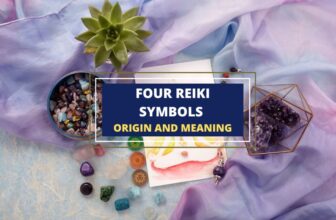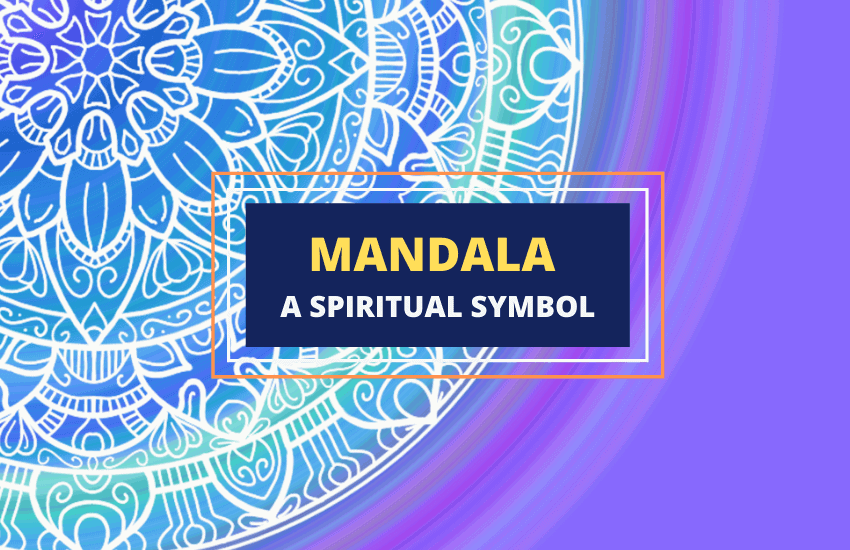
Table of Contents
Eastern religions are renowned for their art, diagrammatic representations, and symbols. One symbol that is popular across the globe is the Mandala. The word Mandala, pronounced mon-dah-lah, means circle or discoid object in Sanskrit. This symbol, sacred to many belief systems across the globe, is designed like a geometric shape and represents the universe.
The Mandala is a profound symbol that can change the way you perceive yourself and the world around you. Let’s take a closer look at the meaning and significance of Mandalas.
What is the Mandala Symbol?
Mandalas have multiple layers of meanings and significations. On a basic level, they signify cosmic unity, harmony, and balance. On a more profound level, they display the connection between human souls and the universe.
The concept behind the Mandala can be better understood if one looks at an example of a spider’s web. In a web, each strand remains distinct and individualistic, but it’s nevertheless connected to the other threads and the structure on the whole. Similarly, an individual has his/her own identity, but at the same time, they are connected to the world around them.
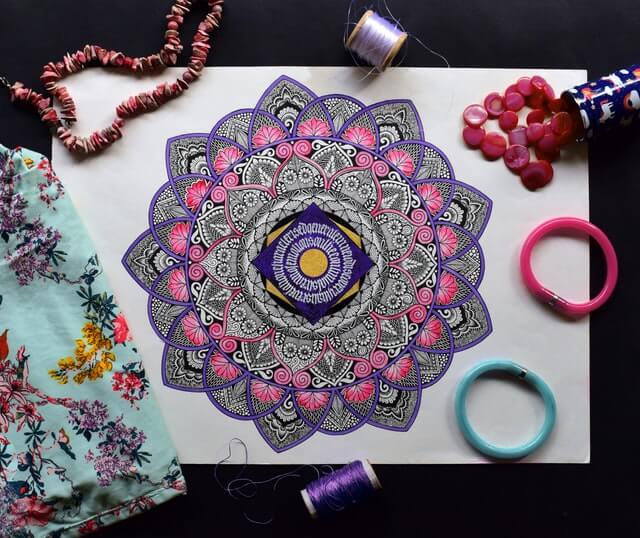
Therefore, the basic meaning behind Mandala is that self-understanding can occur only if there is a deep connection to the universe and vice versa. Many religious practitioners meditate upon the Mandala to attain this level of understanding, which eventually leads to enlightenment.
Origins and History

The earliest textual reference to Mandala is in the Hindu Rigveda. Researchers have deduced that the division of this book is based on the structure of the Mandala. As one delves deeper and deeper into the text, it’s like a transition from the periphery circles of the Mandala to the innermost one, and enlightenment is attained as the book progresses.
Although the Mandala was undoubtedly significant in Hinduism, it was the Buddhists who passed on this symbol to the rest of the world. The followers of Buddha, who traveled upon the Silk Road, transported the Mandala to other parts of Asia, where they were adapted to various religions and cultures.
The Mandala symbol was introduced to the West by psychoanalyst Carl Jung, who believed in its power of enlightenment and a greater awareness of the self.
Mandalas in Religion
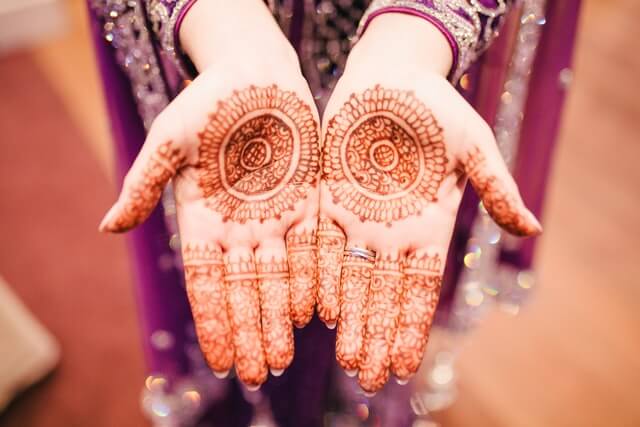
Mandalas carry different meanings depending on the religion and belief system. Let’s take a brief look at what Mandalas signified in some of the most important religions in the world.
1- Hinduism
In Hinduism, Mandala symbols were used to reflect on the purpose of life and existence. They were also used as a channel to connect to the divine entity. A type of Mandala, known as the Yantra, was particularly popular in Hinduism and aided in the practice of deep meditation.
2- Jainism
The Mandalas of Jainism reflected the principles of discipline and righteousness. The Jains believed that true liberation could only be achieved through strict discipline, and to achieve this, their Mandalas had an image of Mahavira surrounded by other minor deities and spirits.
3- Buddhism
Buddhist Mandalas are very diverse and the designs depend on which school one follows. But there are certain common themes in all Buddhist Mandalas such as the representation of change and impermanence, The Eightfold Path, and the story of Buddha’s journey to enlightenment. Buddhists also create sand mandalas and later destroy them, to represent the state of temporariness.
4- Christianity
Although Mandalas are mostly witnessed in Eastern religions, their presence in other belief systems like Christianity can’t be disputed. Note that they were not known by the term ‘Mandala’ in these contexts.
Circular shapes in Christianity like stained glass windows, domes in buildings, rosary beads, and the crown of thorns are all thought to be Mandalas. These circular objects stand as a representation of the universe. Many followers meditate upon these symbols to establish a deeper connection between humans and the divine.
Expert scholars have also stated that the Celtic Cross is a type of Mandala, and to those who disagree, they argue that the symbol is versatile and can include a wide range of designs.
Mandalas in Culture
Mandalas played a significant role in the rituals, belief systems, and healing practices of many ancient cultures. Let’s take a brief look at how Mandalas were viewed by two of the most ancient tribes in the world. Note that while the term ‘Mandala’ was probably never used in these contexts, the concept of the symbol remains very similar.
Native Americans: Native Americans honored and revered Mandala symbols as a way to connect with the divine entity. They also believed that the circular shape was a perfect way to represent the cyclic nature of life and death. The most popular type of Native American Mandala in the Western World is the dream catcher. Dream catchers are used as a symbol of protection to ward off bad dreams and nightmares.
Celts: The Celtic people used Mandalas to attain a higher level of awareness and consciousness. Celtic symbols such as the knot, spiral, and Triquetra are categorized as Mandalas due to their circular designs. In contemporary times, these Celtic designs are very popular in yoga and meditation.
Characteristics of Mandalas

There is no hard and fast rule that Mandalas should have certain fixed characteristics or features. As mentioned earlier, some even consider the Celtic Cross to be a Mandala symbol. But on the other hand, there are some general traits that most Mandalas incorporate.
The Mandala usually has a large circle, within which are other smaller circles leading towards a dot. These different layers can have an innumerable number of designs like geometric patterns or flower-shaped petals. They can incorporate a variety of shapes as well. It is this trait that has made the Mandala a versatile symbol.
Uses of Mandala
Mandala symbols are mainly used for meditation, to aid the practitioner in concentration and focus. When an individual looks at the symbol for a long time, they experience a kind of inner transformation. When they concentrate upon the intricate designs and rich colors, the mind forgets the material world and ventures on a spiritual journey.
In contemporary times, Mandalas aren’t only used for meditation but are also seen as a symbol of positivity, to replace negative thoughts with good vibes and energy.
Common Mandala Symbols
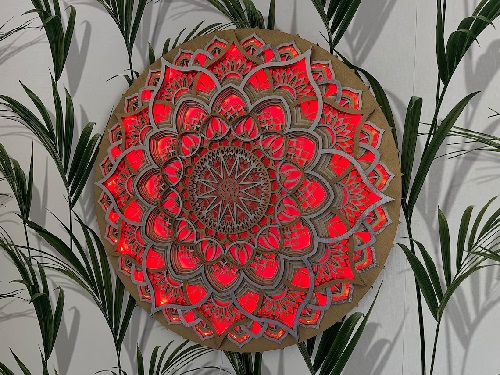
Mandalas of different cultures have slightly different patterns and designs, but some common symbols are present everywhere. Below is a list of Mandala symbols that are found across the globe:
- The Central Circle/Dot: Mandalas universally have a small, central circle or dot. This circle is usually free from designs and is believed to be the starting point of profound spirituality and contemplation.
- Outer Circle: The periphery of Mandalas is designed with an outer circle that represents the ever-changing nature of life, that has no beginning or end.
- Eight Spoke Wheel/ Dharma Wheel: The eight-spoke wheel or dharma wheel is a very popular symbol in Buddhist Mandalas. It represents Buddha’s eight-fold path that addresses the cycle of rebirth and liberation.
- Triangles: Mandalas make use of both upward and downward triangles. Upward triangles are a symbol of energy, and downward triangles represent wisdom.
- The Lotus Flower: Many Hindu and Buddhist Mandala incorporate lotus flowers. Lotus flowers are a symbol of balance, spiritual transformation, and enlightenment.
- The Sun: Sun symbols are more popular in contemporary Mandala designs, and they represent life and positive energy.
- Bells: Mandalas often incorporate bell symbols. They are open at the bottom and represent the emptiness of the mind that is prepared to be filled by spirituality and enlightenment.
Symbolic Meanings of Mandalas
Mandalas have various symbolic meanings and representations. Let’s take a brief look at some of them.
- Symbol of the Universe: Across religions and cultures, Mandalas are considered to be a representation of the universe. Their well-structured shapes and patterns are reflective of an orderly and harmonious world.
- Symbol of Transience: Mandalas are drawn in a circular shape to represent the state of change and impermanence. Circles imply a cyclic nature of life where there is no definite beginning or end.
- Symbol of Transformation: Mandalas are often used in the spiritual transformation of an individual where he/she leaves behind the material world to become one with the divine.
Mandalas in Popular Culture
In the past couple of years, Mandalas have gained wide fame and recognition through dreamcatchers, coloring books, art pieces, and clothing. A popular fashion designer even created a wonderful costume called the Mandala of Desires. They have also become coveted tattoo designs due to their brilliant patterns and intricate designs.
In Brief
Mandalas are timeless and versatile symbols that have played a significant role in religions and cultures across the world. While not always known by the same name, the concept of a circle with elaborate designs used for meditation or for various spiritual purposes exists across the globe.







